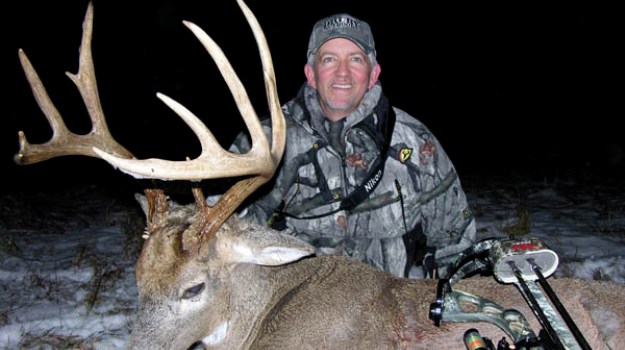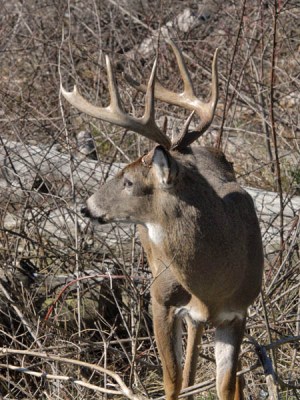
Editor’s Note: Terry Drury, the co-owner with his brother Mark of Drury Outdoors, produces several TV shows, including “Bow Madness,” “Dream Season BioLogic,” and “Drury Outdoors Wildlife Obsession” for the Outdoor Channel and “Natural Born,” which airs on the Pursuit Network, and has been a member of Mossy Oak’s ProStaff since its beginning.
As the rut begins to kick in, Mark and I will move our treestands. We still will hunt the field edges in the evenings where a lot of does will be feeding on that BioLogic Clover Plus and some of the other BioLogic plantings we have. The does that are coming into estrus will move to those green fields late in the afternoon. For our morning hunts, we will set up treestands farther into the timber. About the end of October or the first of November in the Midwest, we start moving closer to the deer’s bedding areas. This is where your camouflage becomes really important, because bedding areas are usually thick-cover regions. Most of the time, you will have your tree stand placed out in the hardwoods that are adjacent to those bedding areas.
 Once again, the way you travel to and from your treestand becomes critically important. To make sure you don’t spook the deer you’re trying to take, walk along the edge of a ravine, sneak through a ditch, or use a creek to go from your vehicle to your tree stand. We want to stay out of sight and downwind of the bedding area that we’ll be hunting, because the deer will return to that bedding area early in the morning, after they have fed on the green fields at night. Many times, we prefer to hunt on top of a ridge, where the trail leads to the bedding areas, because in the morning, the thermals (wind currents) will carry our scent up a mountain. In the afternoons, the opposite is true. If you are hunting a ridge in the afternoon, the thermals will be pulling your scent down the ridge. And, more than likely, your scent will spook the deer that you are trying to take.
Once again, the way you travel to and from your treestand becomes critically important. To make sure you don’t spook the deer you’re trying to take, walk along the edge of a ravine, sneak through a ditch, or use a creek to go from your vehicle to your tree stand. We want to stay out of sight and downwind of the bedding area that we’ll be hunting, because the deer will return to that bedding area early in the morning, after they have fed on the green fields at night. Many times, we prefer to hunt on top of a ridge, where the trail leads to the bedding areas, because in the morning, the thermals (wind currents) will carry our scent up a mountain. In the afternoons, the opposite is true. If you are hunting a ridge in the afternoon, the thermals will be pulling your scent down the ridge. And, more than likely, your scent will spook the deer that you are trying to take.
Another thing we are looking for is acorns. If we can find a white oak tree that is dropping acorns on top of a ridge that the deer have to come across to get from their feeding area to their bedding area, then we believe our chances for taking mature bucks are really good. We feel like the deer, after feeding in that green field all night, may stop off and munch a few acorns before they go to their beds. Another place where we will set-up our treestands for a morning hunt is where there is a watering source between the green field and the bedding area. Almost all the deer will stop and get a drink of water before they go to their bedding area. Those bucks will be scent-checking the trails that the does use to go back to the bedding areas to try and determine if there is an estrous doe moving to the bedding area.
Day 2: Learn to Nest and Where to Place Your Treestand
Tomorrow: The Rut Is On - When to Take the Mature Buck with Terry Drury




























